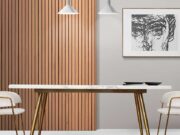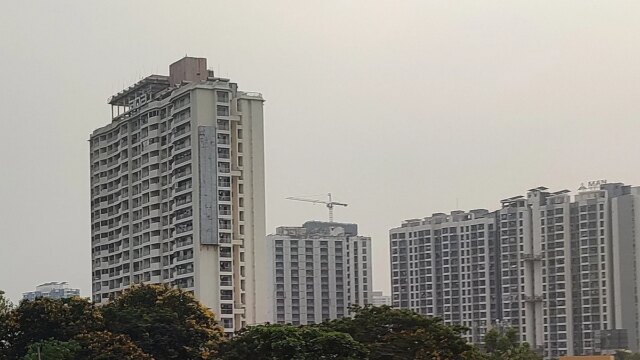The Mumbai Metropolitan Region (MMR) has a heartbeat; It’s fast, loud, and full of life. Every corner is buzzing with something: horns blaring, people rushing, buildings rising. You wake up already in motion and often go to bed with your mind still racing. But in all this pace, where’s the pause? We all need one. A pause that lets us breathe deeper, think softer, and just be. That pause, ideally, should be our home. Not just the place we keep our clothes or charge our phones but the place that recharges us. A space where you can kick off your shoes, loosen your shoulders, and say to yourself, “Okay, I am home now.”
The truth is, many of us walk into our homes and feel more tired. There’s stuff everywhere. The lighting’s too harsh. There’s no real ‘me corner’. And sometimes, it all just feels like a never-ending to-do list instead of a place to rest. But turning your home into a healing space doesn’t mean redoing everything. It doesn’t mean spending a lot. It means noticing. And choosing better for your body, your mind, your soul and your everyday peace. Let’s start small. Really small.
Open to Light
There’s a kind of peace that comes only with sunlight. A soothing effect that wakes you up without a blaring alarm. That spills across your floor in the morning and makes even old furniture look beautiful. If you are lucky enough to have windows that bring in light, celebrate that. Keep them uncluttered. Use light curtains. Place a mirror nearby; it will bounce that sunlight around like magic.
If your flat doesn’t get much natural light, even using warm-toned bulbs and lighter-coloured fabrics can bring in softness. Brightness doesn’t have to mean brightness in wattage; it means how your space feels.
The ‘Me’ Corner
In busy homes and in busy lives it’s easy to forget yourself. So, give yourself a spot. A physical spot, just yours. It can be tiny. A cushion near the window. A chair on the balcony with your favourite plant. Even a stool next to your bed where you keep a book, a candle, or a photo that makes you feel loved. This is not about productivity. This is not about looking pretty for Instagram. This is about carving out five minutes in your day where your brain isn’t planning, worrying, or fixing.
Pick Muted Colours
The colours around us speak quietly to our nervous system. You don’t notice it right away, but you feel it. Soft blues, gentle greens, pale pinks, and earthy browns – they calm our minds. They wrap around you like a favourite blanket. You don’t need to repaint your whole home. Start with pillow covers. Bedsheets. Curtains. Even a calming wall poster. You’ll notice how your space starts to feel ‘’quieter’’.
Let Nature In
You don’t need a garden to feel close to nature. Even a single money plant growing in a bottle of water can shift the mood of a room. Got a little space near the window? Add a basil plant. Or skip plants altogether and use earthy things: wooden bowls, clay mugs, and jute rugs. These little touches bring the outside in, and they ground you. And ‘grounding’ is just another word for feeling steady.
Tidy One Thing
Clutter isn’t just mess. It’s noise. When your home is full of stuff, your brain stays switched on. It keeps reminding you of what you haven’t done. That pile of papers. That drawer of chaos. That chair is full of clothes. Don’t try to do everything. Pick one surface. One corner. Spend 10 minutes. Clean it. That’s it. Do it again tomorrow. Slowly, your space will start to breathe. And so will you.
Keep What Matters
A home should feel like a memory lane, not a museum. Hang that photo that reminds you to laugh. Use your grandmother’s old teacups. Frame that scribbled card your child made you. Keep things that hold emotion, not just aesthetics. But also, let them have space. Don’t overcrowd. Let each piece remind you of something good. Let your home tell your story—softly, not all at once.
Design For Feelings
Every person in your home feels differently. The child who needs a corner to play. The parent who likes sunlight on their back as they read. You, trying to work from the dining table while cooking lunch in your head. Designing a healing home is less about “what’s trending” and more about “what brings ease?” Ask yourself, ‘Where do I feel calm?’ Where do I feel anxious? Start shifting the space based on those answers.
What Do Home Buyers Seek?
Things are changing. People aren’t just asking about square footage anymore. They’re asking:
1. Does this home get sunlight?
2. Is there a breeze? Can I meditate here?
3. Can my children run safely here?
Real estate isn’t just about buildings anymore; it’s about well-being.
Spaces with open layouts, fewer walls, more windows, trees nearby, or even a quiet bench in the common area—these are no longer ‘nice to have’. They’re what people need.
The writer is a self-made businesswoman, philanthropist, psychologist, fitness enthusiast, author, environmentalist, passionate culinarian, and a global advocate for women, girls, and human rights, with a keen interest in real estate, business innovation, and women’s empowerment.

















































